#India- China Conflict
Explore tagged Tumblr posts
Photo

Chinese troop increase at posts in Yangtse has kept tempers high in Tawang sector. On Dec 9, 'larger than normal' patrol party approached & was challenged. Stones flew, fists flew. Some fractures, blackeyes, bruises. 9 Indian & 22 Chinese troops injured.
by @ShivAroor
83 notes
·
View notes
Text
.
#i need to stop doomscrolling its four in the morning im so exhausted i technically have school shit i needed to finish and i have to get up#to go to class in a few hours too#it helps nothing either. its horrible to look and its horrible to look away and they both do absolutely nothing past a point just like w th#other endless amount of absolutely horrible things going on in the world rn#theres no new information now either. just the fallout and seeing what comes next#this and no other horrible thing going on in the world is abt us and how it affects us emotionally obviously like that's just specs of dust#on the thing itself#but. yeah. i. i dont think the human mind copes well w going from locally based ape empathy to exposure to every horrible thing everywhere#....... russia has bombed more apartments and civilian buildings too :( ppl caught under the rubble and dead#just. dear god.. i just keep thinking that. i just keep saying that to myself. dear god#dear god oh lord of duamne ya allah yarabbi whatever variation its most of what goes through my mind on loop#while my mind runs through so much of it. palestina and all the videos of dead and murdered and the children the videos from last week of#that tourist girl in israel the war in ukraina whats happening in kosovo armenia the uyghurs and china all the conflict in india and#pakistan the state of afghanistan yamen civilians being tortured by gangs in south america torture in general and the prisons around the#world and the slavery and the torture and the killing and the starvation and the pain and the million other things going on i don't even#know about and the fucking climate jesus christ the climate change???#and my mind just doesnt stop. it goes through so much shit it maps out this horrible web of pain and pain and pain throughout the entire#world ;;_;;#i uh. i desperately need to take more time in my life and for years on end ive needed to tske more time in my life to think#of the good things happening in ths world too. small things big things anything just anything good anything getting better anything thats#working any proof of humanity in this species#i just. .#.#i go through the full range of human emotion from rage to numbness and dissociation to bitterness to shock to nothing shocks me to endless#sorrow to disgust and i end up at the end#feeling like the same kid who wants to cry and ask why can't we just be nicer to each other please. as if its that simple. j wish it was.#god. i wish
7 notes
·
View notes
Text
I don't know about South Korea, but the Japanese LGBT community has talked about how you can tell the difference between a protest sanctioned by the United States, and a homegrown LGBT movement. One of the tell-tale signs is the use of American jargon and the fact that their signs are in English at all.
It's very likely this is also the case here. South Korea has no history with the Jewish community or with the Arab world. It's very unlikely a homegrown South Korean LGBT movement would align itself with Palestine.





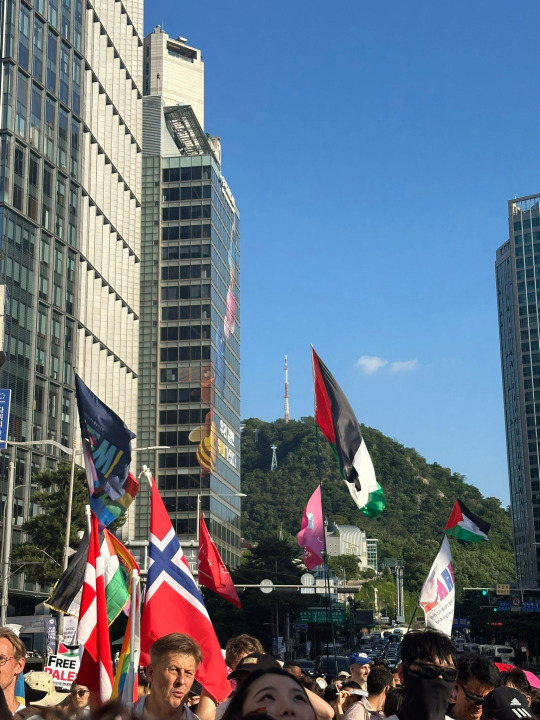
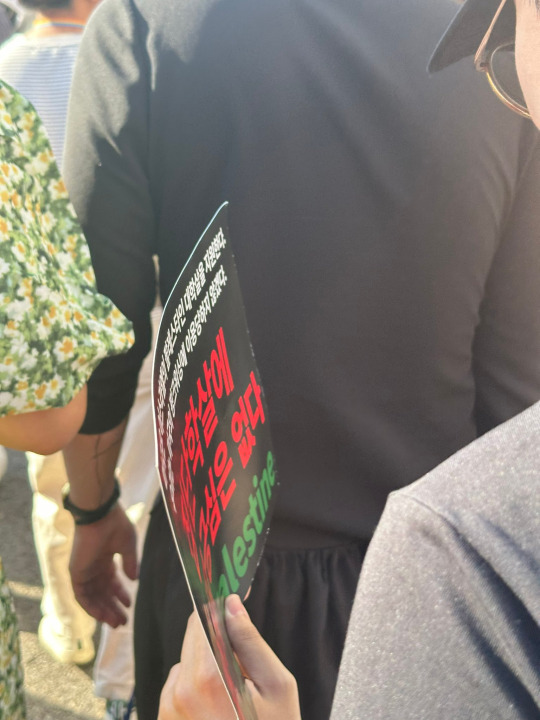
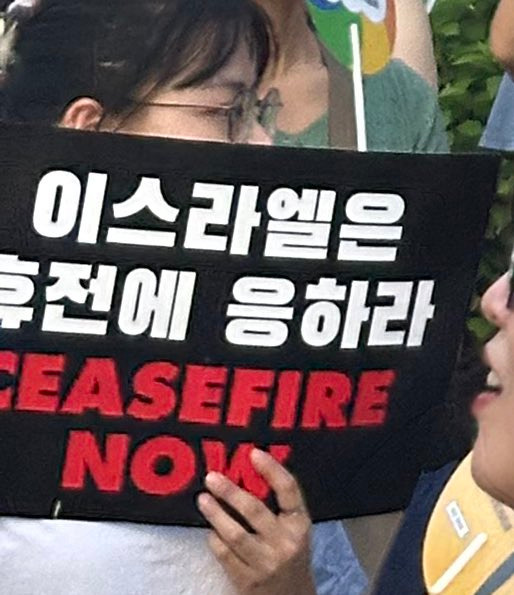
palestine signs at seoul pride
#apparently BTS was suddenly posting a lot of anti-semitic nonsense#turns out it was because they were performing in China#who is allied with russia who supports palestine#actual south koreans have no reason to get involved in the conflict at all#it's not like places like India who have a shared history of oppression from the arab world and that has given Jews safe harbour#legit it would be like if in India people suddenly started talking about the paris bombings back when it happened in 2016#you'd wonder if outside forces were playing a role
59K notes
·
View notes
Text
भारत और चीन के युद्ध की शुरुआत कहां से हुई?
आज हम बात करेंगे, दो ऐसे पड़ोसियों की जो एशिया के साथ-साथ पूरी दुनिया में एक बहुत ऊंचा मुकाम रखते है। टाइटल से यह स्पष्ट समझा जा सकता है कि बात यहां पर भारत और चीन के विषय में ही होने वाली है, तो आइए बेझिझक और बिना लाग लपेट मुद्दे पर आते है। भारत-चीन का युद्ध खासतौर से 1962 में कई कारणों से हुआ था। शुरू से ही पाकिस्तान का हमदर्द रहा चीन भारत को खुद से आगे बढ़ता हुआ नहीं देख सका। हालांकि, 1962 का…
#Aksai Chin map#Causes of conflict between India and China#china-india border dispute 2024#How much land India lost to China in 1962 war#India China border dispute map#india-china border dispute pdf#india-china border dispute upsc#india-china war 1967#Prakhar Pandey
0 notes
Text
India and China Agree on Disengagement and Patrolling Arrangements Along LAC: A Step Towards Border Stability
India and China Agree on Disengagement and Patrolling Arrangements Along LAC: A Step Towards Border Stability In a significant development in India-China relations, the two nations have reached an agreement to disengage their troops and establish new patrolling arrangements along the Line of Actual Control (LAC). This decision, announced by India’s Foreign Secretary Vikram Misri, marks a crucial…
#Asian Geopolitics#Border Tensions#Demchok Dispute#Depsang Plains Issue#Diplomatic Negotiations#Eastern Ladakh Conflict#Galwan Valley Clash#India and China Agree on Disengagement#India-China Border Dispute#India-China Relations#Line of Actual Control (LAC)#Military Disengagement#Pangong Tso Standoff#Peace Talks#S. Jaishankar#Sino-Indian Dialogue#Vikram Misri
0 notes
Text
Ethical Dilemmas in AI Warfare: A Case for Regulation
Introduction: The Ethical Quandaries of AI in Warfare
As artificial intelligence (AI) continues to evolve, its application in warfare presents unprecedented ethical dilemmas. The use of AI-driven autonomous weapon systems (AWS) and other military AI technologies blurs the line between human control and machine decision-making. This raises concerns about accountability, the distinction between combatants and civilians, and compliance with international humanitarian laws (IHL). In response, several international efforts are underway to regulate AI in warfare, yet nations like India and China exhibit different approaches to AI governance in military contexts.
International Efforts to Regulate AI in Conflict
Global bodies, such as the United Nations, have initiated discussions around the development and regulation of Lethal Autonomous Weapon Systems (LAWS). The Convention on Certain Conventional Weapons (CCW), which focuses on banning inhumane and indiscriminate weapons, has seen significant debate over LAWS. However, despite growing concern, no binding agreement has been reached on the use of autonomous weapons. While many nations push for "meaningful human control" over AI systems in warfare, there remains a lack of consensus on how to implement such controls effectively.
The ethical concerns of deploying AI in warfare revolve around three main principles: the ability of machines to distinguish between combatants and civilians (Principle of Distinction), proportionality in attacks, and accountability for violations of IHL. Without clear regulations, these ethical dilemmas remain unresolved, posing risks to both human rights and global security.
India and China’s Positions on International AI Governance
India’s Approach: Ethical and Inclusive AI
India has advocated for responsible AI development, stressing the need for ethical frameworks that prioritize human rights and international norms. As a founding member of the Global Partnership on Artificial Intelligence (GPAI), India has aligned itself with nations that promote responsible AI grounded in transparency, diversity, and inclusivity. India's stance in international forums has been cautious, emphasizing the need for human control in military AI applications and adherence to international laws like the Geneva Conventions. India’s approach aims to balance AI development with a focus on protecting individual privacy and upholding ethical standards.
However, India’s military applications of AI are still in the early stages of development, and while India participates in the dialogue on LAWS, it has not committed to a clear regulatory framework for AI in warfare. India's involvement in global governance forums like the GPAI reflects its intent to play an active role in shaping international standards, yet its domestic capabilities and AI readiness in the defense sector need further strengthening.
China’s Approach: AI for Strategic Dominance
In contrast, China’s AI strategy is driven by its pursuit of global dominance in technology and military power. China's "New Generation Artificial Intelligence Development Plan" (2017) explicitly calls for integrating AI across all sectors, including the military. This includes the development of autonomous systems that enhance China's military capabilities in surveillance, cyber warfare, and autonomous weapons. China's approach to AI governance emphasizes national security and technological leadership, with significant state investment in AI research, especially in defense.
While China participates in international AI discussions, it has been more reluctant to commit to restrictive regulations on LAWS. China's participation in forums like the ISO/IEC Joint Technical Committee for AI standards reveals its intent to influence international AI governance in ways that align with its strategic interests. China's reluctance to adopt stringent ethical constraints on military AI reflects its broader ambitions of using AI to achieve technological superiority, even if it means bypassing some of the ethical concerns raised by other nations.
The Need for Global AI Regulations in Warfare
The divergence between India and China’s positions underscores the complexities of establishing a universal framework for AI governance in military contexts. While India pushes for ethical AI, China's approach highlights the tension between technological advancement and ethical oversight. The risk of unregulated AI in warfare lies in the potential for escalation, as autonomous systems can make decisions faster than humans, increasing the risk of unintended conflicts.
International efforts, such as the CCW discussions, must reconcile these differing national interests while prioritizing global security. A comprehensive regulatory framework that ensures meaningful human control over AI systems, transparency in decision-making, and accountability for violations of international laws is essential to mitigate the ethical risks posed by military AI.
Conclusion
The ethical dilemmas surrounding AI in warfare are vast, ranging from concerns about human accountability to the potential for indiscriminate violence. India’s cautious and ethical approach contrasts sharply with China’s strategic, technology-driven ambitions. The global community must work towards creating binding regulations that reflect both the ethical considerations and the realities of AI-driven military advancements. Only through comprehensive international cooperation can the risks of AI warfare be effectively managed and minimized.
#AI ethics#AI in warfare#Autonomous weapons#Military AI#AI regulation#Ethical AI#Lethal autonomous weapons#AI accountability#International humanitarian law#AI and global security#India AI strategy#China AI strategy#AI governance#UN AI regulation#AI and human rights#Global AI regulations#Military technology#AI-driven conflict#Responsible AI#AI and international law
0 notes
Text
Venice Exhibition and 'Facing Future' Book: Embracing Creativity in a Changing World
It has been a while since I posted. Here with this post, I hope to update you, my friends, with some of what has been happening in my creative life. As always I am trying to understand the changes happening in me and in the world around me, like most people are. The world is definitely evolving, shape shifting and transforming into a future that is yet to reveal itself. In the meantime, all I can…

View On WordPress
#afric#asia#book#cambodia#children rights#china#conflict#congo#europe#exhibition#Fine art#germany#human rights#india#italy#middle east#mimo#mimo khair#peace#photography#portraits#refugees#street#street children#syria#uyigur#venice#war#xinjiang
0 notes
Text
India's Military Renaissance: Rapid Modernization Amidst Regional Tensions A Sign of War Preparation?
India's Military Renaissance: Rapid Modernization Amidst Regional Tensions A Sign of War Preparation? #India #China #Pakistan #Military #Modernization #War #Security #IndiaDefense #GeopoliticalShifts #IndigenousWeapons #SecurityUpdate #GlobalDeterrence
India’s Rapid Military Modernization: A Sign of War Preparation? India is undergoing a massive military modernization program, with a focus on developing indigenous arms and weapon systems. The country has conducted at least half a dozen missile tests in the last week, showcasing its capabilities in various domains such as air, land, sea, and space. Some of the notable weapons that India has…
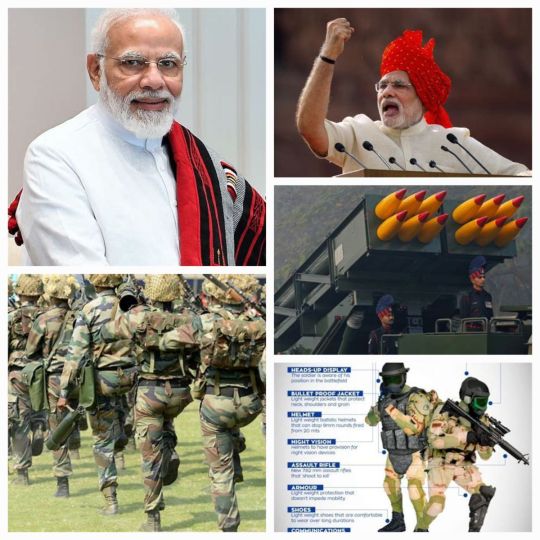
View On WordPress
#China#conflict#defense#Defense Capabilities#Deterrence Strategy#Geopolitics#India#India Military Modernization#Indigenous Weapons#Indo-China Relations#Indo-Pakistan Relations#military#Modernization#National Security#Pakistan#platforms#Security#War#weapons
0 notes
Text
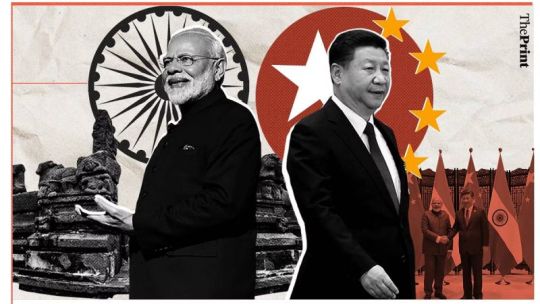
UPDATE: Is China preparing for another war with India? The US thinks it is!! According to a recent report by the US Pentagon, China has continued to build new roads, helipads, bridges, airports, and even new villages along the Line of Actual Control (LAC) with India! Moreover, China has also reportedly deployed more troops in the region and the same is expected to continue throughout 2023!!
Read full: https://www.linkedin.com/posts/casakshamagarwal_china-india-lac-activity-7122865677853425664-2bZr?utm_source=share&utm_medium=member_desktop
Follow Jobaaj Stories (the Media arm of Jobaaj.com Group) for more.
#china#india#lac#us#pentagon#military#politics#geopolitics#globalpolitics#conflict#galwan#skirmish#airforce#army#indian#chinese#trouble
1 note
·
View note
Text
ANALIZĂ | Jurnalistul Aleksandr Smirnov: ”Scoasă în stradă de Occident, Rusia își vinde mărfurile oricui, dar cumpărătorii stabilesc prețurile”
Jurnalistul și traducătorul Aleksandr Smirnov analizează noul context economic în care se regăsește Rusia lui Vladimir Putin după declanșarea războiului din Ucraina, focusându-se asupra subiectului ”Federația Rusă și vecinii asiatici”. Supusă sancțiunilor Occidentului, Rusia caută ”portițe” pentru a-și vinde mărfurile pe alte piețe și pentru a obține sumele de bani exorbitante care sunt necesare…

View On WordPress
#Aleksandr Smirnov#articole cristian lisandru#conflict ucraina#kremlin#relatii china india#relatii china rusia#sanctiuni rusia#Vladimir Putin
1 note
·
View note
Text
US, India ‘can’t take eyes off ball’ on Chinese aggression at LAC, says American defence attaché
By N. C. Bipindra New Delhi: India and the United States can’t afford to take their “eyes off the ball” when it comes to Chinese aggression along the Line of Actual Control (LAC), a senior US defence official posted at its embassy here said today, as he made it clear that Washington remains watchful of Beijing‘s moves. Rear Admiral Michael L. Baker, the United States defence attaché in India,…

View On WordPress
#Border#China#Communist China#Conflict#Defence#Defence Attache#Defense#Defense Attache#India#LAC#Ladakh#Line of Actual Control#Military#People&039;s Liberation Army#People&039;s Republic of China#Peoples Liberation Army#Peoples Republic of China#United States#United States of America
0 notes
Text
.
#i cant read anything without thinking of world war 3#the world is Such a mess rn#youve got israel and palestine w the us euro india whoever else pushing for israel meanwhile other side youve got#iran pushing for hamas and mujahedeen from dif regions showing up#all while zelensky the biggest fan of the us on the planet supports israel while hamas thanks ukraine for sending them weapons???#youve got what's happening in armenia w azerbaijan and turkey and thats a whole fucking mess too#youve got ukraine another geopolitical nightmare#china seems to be gearing up for shit in taiwan#i keep hearing about baddd conflicts going on in india and im sure kashmir isnt great#and im sure pakistan siding w palestine and india w israel will go great#youve got kosovo getting bad again and it might get worse and turn into a whole thing#great!!!! wonderful!! brilliant brillaint state of affairs#how the fuck are we gonna avoid a world war exactly#could this species for once stop fucking slaughtering and opressing each other maybe#we never should have invented weapons like the ones we have. never. guns bombs atomic bombs airplanes drones none of it#we should have stuck with fucking bows and spears and swords and other shit like that
6 notes
·
View notes
Text
From Petroleum to Inflation, the Russia-Ukraine conflict has had a global impact.






0 notes
Text
War and crime: The conflicts with which we are entering 2023
War and crime: The conflicts with which we are entering 2023
By Adarsh T R: The year 2022 witnessed a continuation of several conflicts that have been raging on for the past few years now. After threats and mobilisation of troops near the border, Russia invaded Ukraine in February with Vladimir Putin calling it a special military operation. If you think Russia’s war in Ukraine was the deadliest, think again. A brutal war in East Africa, that has been going…
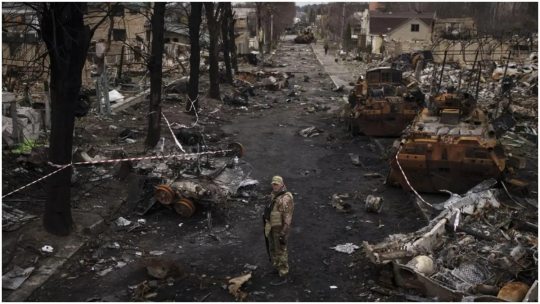
View On WordPress
#china taiwan conflict#conflicts#conflicts 2022#conflicts 2023#crime#entering#ethiopia civil war#india china conflict#korea war#russia ukraine 2022 war#russia ukraine war latest#Russia-ukraine war#syria war#syria war latest#war#war 2022#war and crime 2022#wars 2023#wars this year#world war 2023#yemen 2022 syria war#yemen war#yemen war latest
0 notes
Text
India provocations will not go unanswered,China is ready for a clash of titans.
The post is machine translated
The translation is at the bottom
The collective is on telegram
⚠️ L'ESERCITO POPOLARE DI LIBERAZIONE HA DISPIEGATO CACCIA MULTIRUOLO E DRONI DA RICOGNIZIONE PRESSO BASI AEREE VICINO AL CONFINE CON L'INDIA ⚠️
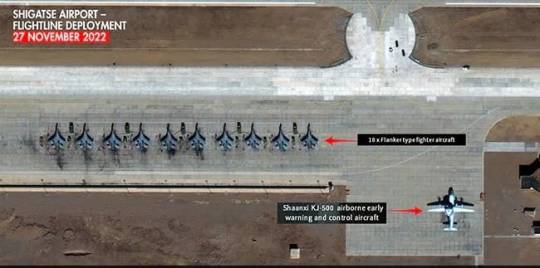



🇨🇳|🇮🇳 Dopo lo "Scontro del 9 Dicembre" a Dáwàng Zhèn tra le Forze Armate dell'India e l'Esercito Popolare di Liberazione, è stato notato - tramite immagini satellitari - il dispiegamento di UAV ed Aerei dell'EPL negli Aeroporti e nelle Basi Aeree della Regina Autonoma del Tibet
✈️ Dall'11 dicembre, presso la Base Aerea di Shigatse, si possono notare:
➖ 10 Caccia Multiruolo J-16 - [FOTO 1]
➖ Almeno 1 Aereo da Sorveglianza e Controllo Aviotrasportato KJ-500 - [FOTO 1]
✈️ Alla Base Aerea di Bangda - che dista 150km dall'Arunachal Pradesh - si possono notare:
➖ 1 UAV da Ricognizione WZ-7 - [FOTO 2]
➖ 1 UAV da Ricognizione e da Combattimento CH-4B - [FOTO 3]
➖ 2 Caccia Multiruolo J-16 [FOTO 4]
🐲 La messa in servizio del WZ-7 e del CH-4B - nonché il loro uso operativo - indicano che è stato creato con successo un ambiente perfettamente funzionante per supportare missioni speciali nella Regione dell'Aksai Chin 🔥
💭 Tali immagini dalla Base Aerea di Bangda sono apparse il giorno prima delle esercitazioni dell'Aeronautica Indiana al confine con la Cina, ciò significa che il Partito Comunista Cinese - tramite le sue Agenzie di Intelligence - era a conoscenza dei piani dell'India, e si è dunque - intelligentemente - preparato in anticipo per seguire le tattiche dell'Aeronautica Indiana, osservando e studiando i movimenti dell'India per effettuare operazioni di contrasto nell'ambito di un conflitto ⚔️
🇨🇳 Ciò significa che l'infrastruttura militare creata negli ultimi mesi - aeroporti, eliporti, sistemi di difesa area, linee di comunicazione - ha permesso e permetterà all'Esercito Popolare di Liberazione di dispiegare rapidamente forze e mezzi qualora la situazione con l'India si aggravasse.
🌸 Iscriviti 👉 @collettivoshaoshan
⚠️ THE PEOPLE'S LIBERATION ARMY DEPLOYED MULTI-ROLE FIGHTERS AND SCAN DRONES AT AIR BASES NEAR THE INDIA BORDER ⚠️
🇨🇳|🇮🇳 After the "December 9th Clash" in Dáwàng Zhèn between the Armed Forces of India and the People's Liberation Army, it was noted - via satellite images - the deployment of PLA UAVs and Aircraft at the Airports and in the Tibet Autonomous Queen Air Bases
✈️ Since December 11, at Shigatse Air Base, you can see:
➖ 10 J-16 Multirole Fighters - [PHOTO 1]
➖ At least 1 Airborne Surveillance and Control Aircraft KJ-500 - [PHOTO 1]
✈️ At the Bangda Air Base - which is 150km away from Arunachal Pradesh - you can see:
➖ 1 WZ-7 Reconnaissance UAV - [PHOTO 2]
➖ 1 CH-4B Reconnaissance and Combat UAV - [PHOTO 3]
➖ 2 J-16 Multirole Fighter [PHOTO 4]
🐲 The commissioning of the WZ-7 and CH-4B - as well as their operational use - indicate that a fully functional environment has been successfully created to support special missions in the Aksai Chin Region 🔥
💭 Such images from Bangda Air Base appeared the day before the Indian Air Force exercises on the border with China, this means that the Communist Party of China - through its Intelligence Agencies - was aware of India's plans, and he therefore - intelligently - prepared in advance to follow the tactics of the Indian Air Force, observing and studying India's movements to carry out contrast operations in the context of a conflict ⚔️
🇨🇳 This means that the military infrastructure created in recent months - airports, heliports, air defense systems, communication lines - has allowed and will allow the People's Liberation Army to rapidly deploy forces and means should the situation with India got worse.
🌸 Subscribe 👉 @collettivoshaoshan
#socialism#china#italian#translated#china news#communism#collettivoshaoshan#western imperialism#india army#indian border#india news#politics#diplomacy#war#border conflict#china army#people liberation army#pla#marxist#marxist leninist#marxism leninism#marxism
0 notes
Text
AI, Cybersecurity, and National Sovereignty
Introduction: The Role of AI in Cybersecurity
As artificial intelligence (AI) becomes integral to national security, cyber threats increasingly exploit AI-driven vulnerabilities. Both India and China face the challenge of securing their cyber infrastructure while mitigating espionage and offensive cyber operations. The risks include large-scale data breaches, intellectual property theft, and attacks on critical infrastructure. With AI enhancing the scope and speed of cyberattacks, national sovereignty is increasingly threatened by cyber vulnerabilities that transcend borders.
AI-Driven Cyber Threats and Espionage
China has heavily integrated AI into its cyber capabilities, using it to enhance espionage, cyber warfare, and information manipulation. AI-enabled cyber operations allow China to gather vast amounts of intelligence data through advanced hacking techniques. These tools are often deployed through state-sponsored groups, exploiting zero-day vulnerabilities and penetrating government and corporate networks worldwide.
For example, in 2021, China was accused of orchestrating a large-scale cyber-attack targeting Microsoft Exchange servers, affecting over 30,000 organizations globally. This attack was designed to facilitate espionage, capturing sensitive information ranging from corporate intellectual property to government data. China's cyber operations underscore the increasing use of AI in orchestrating sophisticated, large-scale intrusions that threaten national sovereignty.
India, while lagging behind China in offensive cyber capabilities, faces persistent cyber espionage threats from Chinese state-sponsored actors. The most notable incidents occurred during the 2020 India-China border standoff, where Chinese hackers targeted India's critical infrastructure, including power grids and government networks. These attacks highlight the vulnerabilities in India's cybersecurity architecture and its need to enhance AI-driven defenses.
Vulnerabilities and National Sovereignty
AI-driven cyber threats pose significant risks to national sovereignty. For India, the challenges are magnified by the relatively underdeveloped nature of its cybersecurity infrastructure. Although the establishment of the Defence Cyber Agency in 2018 marked a step forward, India still lacks the offensive cyber capabilities and AI sophistication of China. India's defensive posture primarily focuses on securing critical infrastructure and mitigating cyber intrusions, but it remains vulnerable to cyber espionage and attacks on its digital economy.
China's integration of AI into both military and civilian cyber systems, through its Military-Civil Fusion policy, has bolstered its ability to conduct large-scale cyber operations with deniability. This fusion allows China to leverage private sector innovations for military purposes, making it a formidable cyber power in the Indo-Pacific region.
Case Studies: Cyber Confrontations
In 2019, a significant cyberattack targeted India's Kudankulam Nuclear Power Plant, which was traced back to North Korea, but was believed to be part of a broader effort involving Chinese actors. This incident highlighted the potential for AI-enhanced malware to target critical infrastructure, posing severe risks to national security.
Similarly, the 2020 Mumbai blackout, reportedly linked to Chinese hackers, emphasized how AI-driven cyberattacks can disrupt essential services, creating chaos in times of geopolitical tension. These incidents illustrate how AI-driven cyber capabilities are increasingly weaponized, posing severe risks to India's sovereignty and its ability to protect critical infrastructure.
Implications for Future Conflicts
As AI continues to evolve, the cyber domain will become a primary battleground in future conflicts between India and China. AI-enhanced cyber operations provide both nations with the ability to conduct espionage, sabotage, and information warfare remotely, without direct military engagement. For China, these tools are integral to its broader geopolitical strategy, while India must develop its AI and cybersecurity capabilities to protect its national sovereignty and counteract cyber threats.
Conclusion
The integration of AI into cybersecurity poses both opportunities and challenges for India and China. While China has aggressively developed AI-driven cyber capabilities, India faces an urgent need to enhance its defenses and develop its offensive cyber tools. As cyberattacks become more sophisticated, driven by AI, both nations will continue to grapple with the implications of these developments on national sovereignty and global security.
#AI and cybersecurity#National sovereignty#Cyber espionage#India China cyber conflict#AI driven threats#Cyber warfare#Critical infrastructure#Cyber defense#China cyber strategy#India cybersecurity#AI and national security#Cyberattacks#Espionage operations#AI vulnerabilities#Military Civil Fusion#Cyber sovereignty#Cyber espionage India#AI in geopolitics#AI enhanced malware#Data security
0 notes